Reaching today’s diverse audiences is challenging. Broad marketing campaigns that cast a wide net often miss the mark, wasting resources and failing to resonate. Customer segmentation tools offer a solution: target the right customers with the right message.
This blog provides a list of the best customer segmentation tools available, a step-by-step guide on how to use these tools, and tips on selecting the right one for your business needs.
What are Customer Segmentation Tools?
Customer segmentation tools, sometimes referred to as market segmentation tools, pull data from websites, social media interactions, or purchase histories to create highly targeted customer groups. These tools then analyze customer data like demographics, behaviors, and preferences to help you create relevant messaging that speaks directly to each segment, driving better customer engagement and ultimately boost conversions.
Let’s take a look at the best tools for customer segmentation and compare their features to help you make an informed decision.
Top Customer Segmentation Tools At A Glance
Let’s take a quick look at the top customer segmentation tools before we dive deeper into each of them.
| Tool | Key Features | Best For | Pros | Cons |
|---|---|---|---|---|
| CleverTap | Advanced analytics, real-time & intent-based segmentation, RFM analysis, user journey tracking | Companies in e-commerce, media, and fintech aiming to enhance user engagement and retention. | Highly customizable segments, intuitive interface, real-time analytics, longer lookback period. | Primarily designed for businesses with established data collection strategies. |
| HubSpot | CRM integration, behavioral triggers, automated workflows | Businesses that need an all-in-one marketing, sales, and segmentation platform. | Comprehensive CRM integration, strong analytics and reporting. | Higher price point for premium features. |
| Mailchimp | Email segmentation based on demographics, purchase history, and engagement | Small to medium businesses focused on email marketing. | Affordable, user-friendly, multiple segmentation options. | Primarily focused on email, limited in other areas. |
| Kissmetrics | Behavioral analytics, customer journey tracking, and pinpoint actions that lead to conversions. | Data-driven businesses that need in-depth behavioral insights. | Multi-channel tracking, in-depth behavior analysis. | It can be complex for users without technical expertise. |
| Google Analytics | Website visitor segmentation by behavior, traffic sources, and demographics | Basic segmentation needs, especially for website traffic. | Free, accessible, and highly customizable. | Limited to web analytics, lacks deep segmentation options. |
| Heap | Automatic capture of all user interactions | SaaS companies that need detailed user behavior data. | Comprehensive data capture and rich insights. | Setup and data interpretation can be challenging for beginners. |
| Survicate | Customer feedback collection through surveys | Companies prioritizing customer feedback as part of their segmentation. | Real-time survey data, and flexible survey formats. | Limited beyond survey-based segmentation. |
| Userpilot | Segmentation based on in-app behavior, onboarding progress, and product usage | SaaS companies focused on onboarding and product adoption. | Excellent for in-app messaging, and onboarding insights. | Primarily useful for SaaS and in-app contexts. |
| Segment | Advanced audience segmentation and omnichannel communication | Businesses looking to enhance customer communication and engagement through data-driven segmentation and omnichannel messaging. | Integrates with other platforms is easy, allowing users to segment campaigns based on real-time data. | Segment has expensive add-ons and visits-based pricing. |
| Qualtrics | Single platform for target group creation, results analysis, and AI-driven insights | Businesses seeking to tailor products and marketing to specific customer segments and improve customer segmentation research. | Intuitive survey builder and automated cluster analysis eliminate the need for specialized statistical expertise. | Steep learning curve. |
Comparing The Top 10 Customer Segmentation Tools
Choosing the right marketing segmentation tools is crucial for effective campaigns. Here are some of the best customer segmentation tools available in the market:
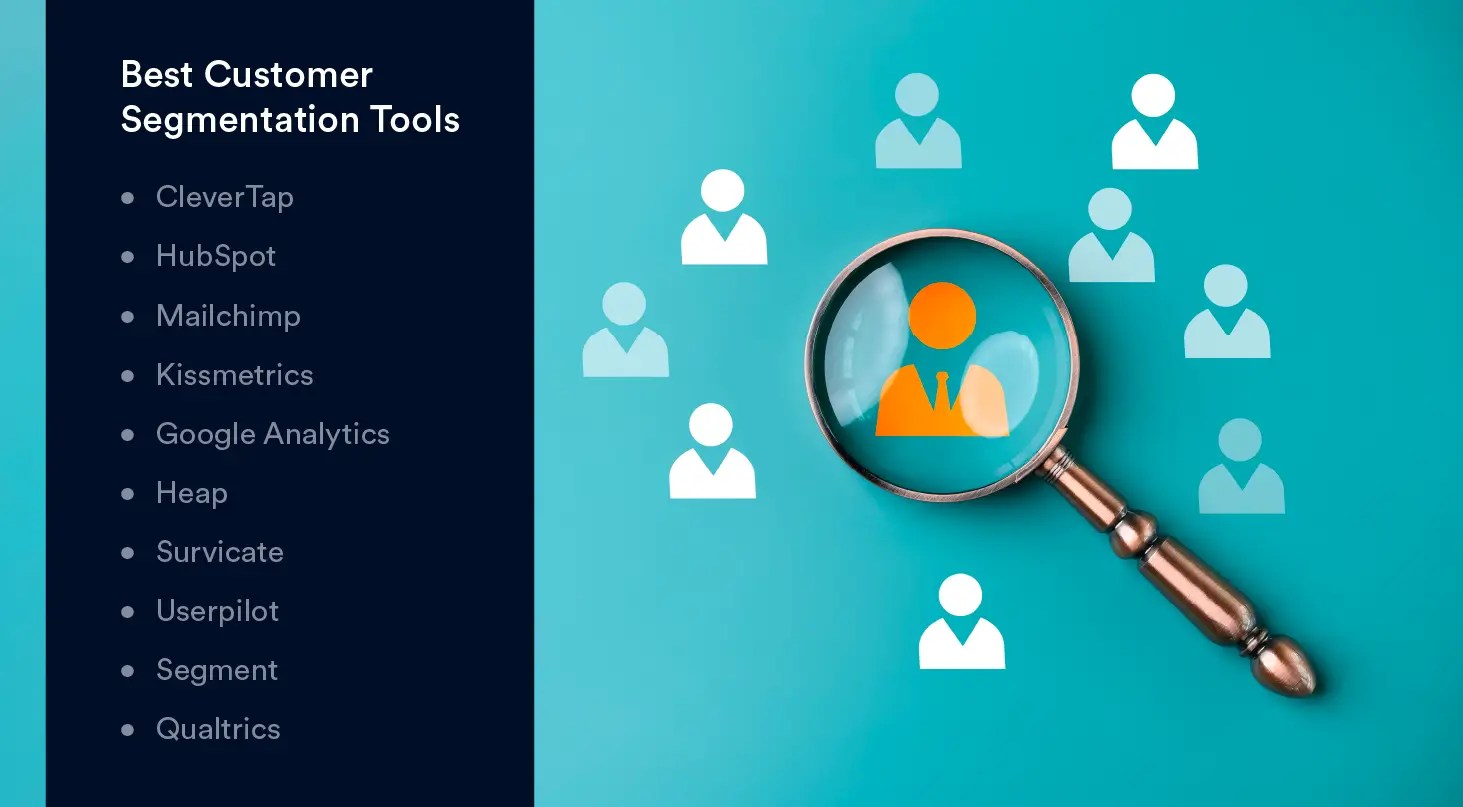
1. CleverTap
CleverTap’s customer segmentation tool is designed to give businesses a deep, actionable understanding of their users by helping conduct demographic, geographic, behavioral, and psychographic segmentation.
Key Features
- Advanced Analytics & Predictive Segmentation: CleverTap’s Intent-Based Segments enable businesses to define future goals and receive instant predictions on the likelihood of achieving them. This allows companies to anticipate customer needs and drive proactive engagement by creating intent-based micro-segments, categorizing users into groups such as Most Likely, Moderately Likely, and Least Likely to achieve a specific goal.
- Real-Time Segmentation: CleverTap’s Live User Segments allow businesses to capture user behavior instantly and respond with timely, relevant campaigns. By defining a set of behaviors of interest, CleverTap monitors these behaviors as they happen in your app and immediately adds a user to a segment the moment their behavior matches your action criteria.
- RFM Analysis & User Journey Tracking: CleverTap’s RFM Analysis segments users based on recency, frequency, and monetary metrics, helping assess customer value and behavior across multiple touchpoints. This analysis categorizes users into segments such as Champions, Loyal Users, and Hibernating users, allowing businesses to tailor their engagement strategies accordingly.
- Audience Segmentation Tool: CleverTap provides the ability to create segments based on user actions or profile properties, allowing businesses to tailor messaging for improved customer retention and engagement. For example, you can create a segment of users from California, who are females, launched the application in the last 30 days, and have not purchased anything from the app.
- Customizable Cohorts & Live Audience Segments: CleverTap allows businesses to create Past Behavior Segments and Live User Segments, enabling targeting based on recent behavior or long-term trends to design meaningful campaigns for each group.
- Behavioral & Event-Triggered Messaging: CleverTap’s Push Notification campaigns can be triggered based on specific user actions, automating interactions to optimize customer experiences across their lifecycle journey. For example, you can send push notifications to users who have added a product to the cart but did not purchase it within a certain time frame.
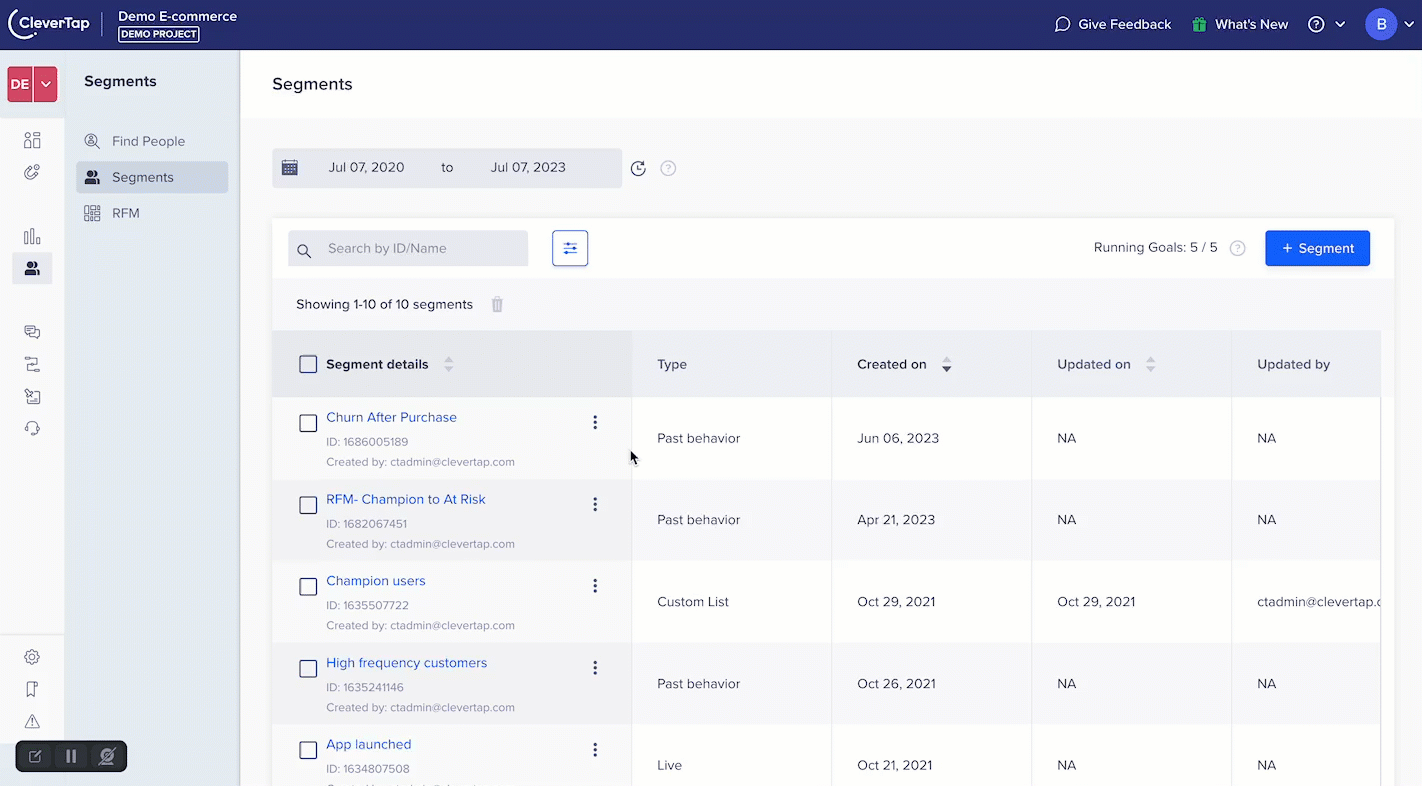
CleverTap also takes segmentation to the next level with its Agentic AI-powered ecosystem. At the core is the CleverAI Decisioning Engine, which functions as the brain of the platform, orchestrating a network of intelligent agents that collaborate to analyze, decide, and act in real time. This modular and scalable system ensures strategies evolve continuously based on changing customer behavior.
The AI agents each play a distinct role in enhancing segmentation. Decision Agents predict intent and determine the best actions for each user segment, while Strategy Agents refine engagement plans to maximize customer lifetime value. Creative Agents automatically generate individualized campaign variants, and Action Agents orchestrate 1:1 interactions at scale. Together, these agents simplify the complexity of segmentation, ensuring every customer receives messaging tailored to their needs and context.
By combining traditional segmentation models like RFM and behavioral analysis with AI-driven predictions and real-time orchestration, CleverTap allows businesses to personalize with unprecedented precision. This not only makes segmentation easier for marketers but also ensures campaigns are continuously optimized for growth, retention, and ROI.
Best For: CleverTap’s segmentation tool is particularly beneficial for companies across various industries, including e-commerce, media, and fintech, aiming to enhance user engagement and retention through personalized and timely interactions.
Pros: Highly customizable segments, intuitive interface, real-time analytics, longer lookback period.
Cons: Primarily designed for businesses with established data collection strategies.
Learn more about CleverTap’s segments here.
2. HubSpot
Key Features: HubSpot’s CRM integrates segmentation with behavioral triggers and automated workflows, allowing businesses to manage leads, track customer journeys, and tailor marketing strategies.
Best For: Businesses needing an all-in-one marketing, sales, and segmentation platform.
Pros: Comprehensive CRM integration, strong analytics and reporting.
Cons: Higher price point for premium features.
3. Mailchimp
Key Features: Mailchimp is a popular email marketing tool that offers segmentation based on demographics, purchase history, and engagement. It’s user-friendly and integrates well with other platforms.
Best For: Small to medium businesses focused on email marketing.
Pros: Affordable, user-friendly, multiple segmentation options.
Cons: Primarily focused on email, limited in other areas.
Looking for powerful tools? Discover the top 15 customer engagement platforms that brands rely on.
4. Kissmetrics
Key Features: This tool specializes in behavioral analytics, allowing businesses to track customer journeys and pinpoint which actions lead to conversions.
Best For: Data-driven businesses that need in-depth behavioral insights.
Pros: Multi-channel tracking, in-depth behavior analysis.
Cons: It can be complex for users without technical expertise.
5. Google Analytics
Key Features: Google Analytics is widely used to segment website visitors by behavior, traffic sources, and demographics. It provides a solid foundation for web-based customer insights.
Best For: Basic segmentation needs, especially for website traffic.
Pros: Free, accessible, and highly customizable.
Cons: Limited to web analytics, lacks deep segmentation options.
6. Heap
Key Features: Heap automatically captures all user interactions to provide a complete picture of customer behavior across digital touchpoints. Ideal for mapping digital journeys.
Best For: SaaS companies that need detailed user behavior data.
Pros: Comprehensive data capture and rich insights.
Cons: Setup and data interpretation can be challenging for beginners.
7. Survicate
Key Features: Survicate collects customer feedback through surveys, enabling segmentation based on real-time insights. It’s useful for businesses that rely on customer feedback to drive strategy.
Best For: Companies prioritizing customer feedback as part of their segmentation.
Pros: Real-time survey data and flexible survey formats.
Cons: Limited beyond survey-based segmentation.
8. Userpilot
Key Features: Userpilot segments users based on in-app behavior, onboarding progress, and product usage, helping SaaS companies reduce churn and improve engagement.
Best For: SaaS companies focused on onboarding and product adoption.
Pros: Excellent for in-app messaging and onboarding insights.
Cons: Primarily useful for SaaS and in-app contexts.
9. Segment
Key Features: Segment offers advanced audience segmentation and omnichannel communication, enabling businesses to improve customer communication and engagement strategies through data-driven segmentation. It provides real-time dashboards and custom audience reports.
Best for: Businesses looking to enhance customer communication and engagement through data-driven segmentation and omnichannel messaging.
Pros: Integrates with other platforms is easy, allowing users to segment campaigns based on real-time data.
Cons: Segment has expensive add-ons and visits-based pricing.
10. Qualtrics
Key Features: Qualtrics offers a single platform for creating target groups and analyzing results. It uses advanced analytics with machine learning and AI to identify new customer segments and determine how to attract them.
Best for: Businesses seeking to tailor products and marketing to specific customer segments and improve customer segmentation research.
Pros: Intuitive survey builder and automated cluster analysis eliminates the need for specialized statistical expertise.
Cons: Steep learning curve.
Explore more: Top 21 AI email marketing tools to boost engagement and conversions.
11. Contentsquare
Key Features: Contentsquare is a digital experience analytics platform that tracks user behavior across websites and apps. It provides heatmaps, session replays, and funnel analysis to identify friction points and optimize customer journeys. AI-powered insights highlight trends and performance issues without manual tagging.
Best For: Enterprises and mid-sized businesses aiming to improve UX, conversion rates, and digital performance.
Pros: Comprehensive analytics, strong visualization tools, AI-driven insights.
Cons: Expensive and complex for smaller businesses with simpler needs.
12. Hotjar
Key Features: Hotjar is a behavior analytics and feedback tool that offers heatmaps, session recordings, and on-site surveys. It helps teams understand how users interact with pages and uncover why they drop off at key steps.
Best For: Product, UX, and marketing teams seeking quick insights into user experience.
Pros: Easy to set up, intuitive visualizations, combines qualitative and quantitative data.
Cons: Limited segmentation depth, sampled data may miss edge cases.
13. Insightly
Key Features: Insightly is a CRM and marketing automation platform that unifies contact management, sales pipelines, and campaign workflows. Its marketing module supports email campaigns and audience segmentation.
Best For: Small to medium businesses that want CRM and marketing automation in one platform.
Pros: Unified customer view, easy to use, cost-effective compared to enterprise CRMs.
Cons: Limited advanced analytics and segmentation features.
14. Mixpanel
Key Features: Mixpanel is a product analytics tool designed to track user events and behavior. It offers funnels, cohort analysis, retention tracking, and real-time dashboards to help product teams understand feature adoption and engagement.
Best For: SaaS companies and product teams focused on growth and retention.
Pros: Strong event tracking, detailed behavioral analytics, real-time insights.
Cons: Requires proper event setup and may be complex for beginners.
15. Monetate
Key Features: Monetate is a personalization and optimization platform that allows businesses to deliver tailored content and product recommendations. It supports A/B and multivariate testing to drive conversions through targeted experiences.
Best For: Ecommerce and retail businesses looking to increase sales with personalization.
Pros: Powerful personalization, improves relevance of campaigns, supports testing at scale.
Cons: Requires rich data and content resources, potentially costly for smaller teams.
16. Klaviyo
Key Features: Klaviyo is a marketing automation and customer data platform built for ecommerce brands. It offers email and SMS campaigns, prebuilt workflows like cart abandonment, and advanced audience segmentation.
Best For: Ecommerce businesses focused on customer retention and repeat purchases.
Pros: Strong segmentation, rich integrations with ecommerce platforms, revenue-focused analytics.
Cons: Costs increase significantly with large contact lists.
17. Optimove
Key Features: Optimove is a relationship marketing platform that combines customer data management with predictive analytics. It segments audiences and automates multichannel campaigns aimed at retention and growth.
Best For: Businesses with established customer bases looking to improve loyalty and reduce churn.
Pros: Predictive modeling, advanced segmentation, strong retention focus.
Cons: Complex to set up and may require significant data resources.
18. Totango
Key Features: Totango is a customer success platform designed to track customer health and manage post-sales engagement. It provides prebuilt “SuccessBLOCs” for onboarding, renewals, and upsells.
Best For: SaaS companies with dedicated customer success teams.
Pros: Improves retention, built-in best practices, visibility into customer health.
Cons: Less suited for acquisition marketing, dependent on data quality.
Benefits of Customer Segmentation Tools
The benefits of segmentation tools extend well beyond personalization.
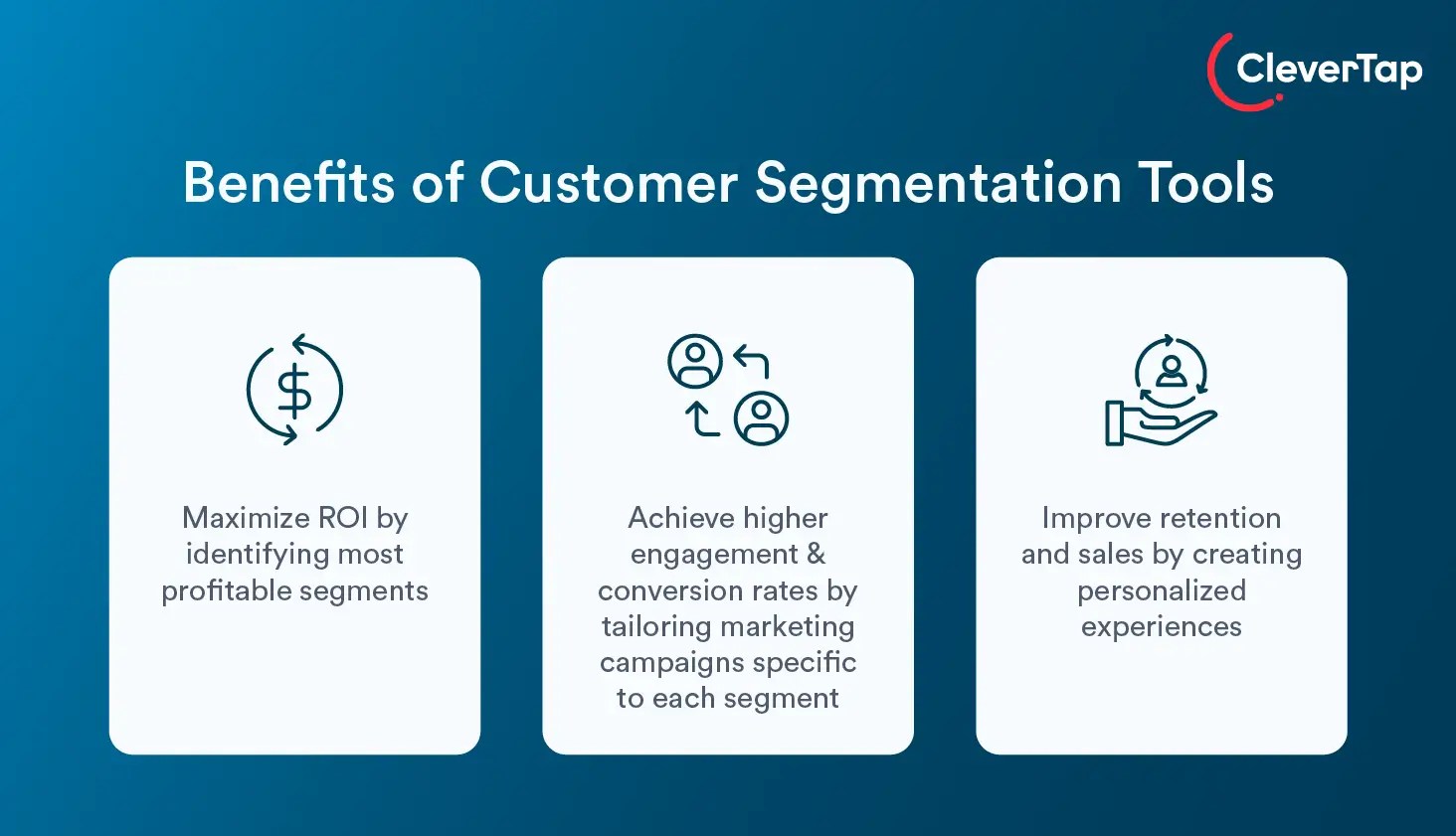
Businesses that use these solutions often see measurable improvements in their marketing efforts. According to research from DMA, segmented email campaigns can drive a 760% increase in revenue. But that’s just the beginning.
Maximize ROI
Uncover your most profitable customer groups and understand their specific behaviors and preferences. Focus your resources on nurturing these segments to maximize ROI.
Achieve Higher Engagement and Conversion Rates
Create highly targeted campaigns that resonate with specific customer segments, leading to higher engagement rates and better conversion rates. For example, here’s what an e-commerce retailer would do:
- Segment: Running shoe buyers interested in the outdoors.
- Targeted Campaign: Email showcasing new trail running apparel with scenic imagery, a customer-specific discount, and links to trail running tips.
- Expected Result: Higher engagement and conversions as content aligns with interests and purchase history.
Improve Customer Retention and Sales
Tailored experiences and relevant offers, enabled by customer segmentation, boost customer loyalty, repeat purchases, and customer lifetime value, significantly improving your bottom line.
How to Use Customer Segmentation Tools
Customer segmentation tools offer a powerful way to get your marketing efforts in front of the right people, but using them effectively requires some strategic steps. Here’s a guide to making the most out of your segmentation efforts.
1. Build a Unified Customer View
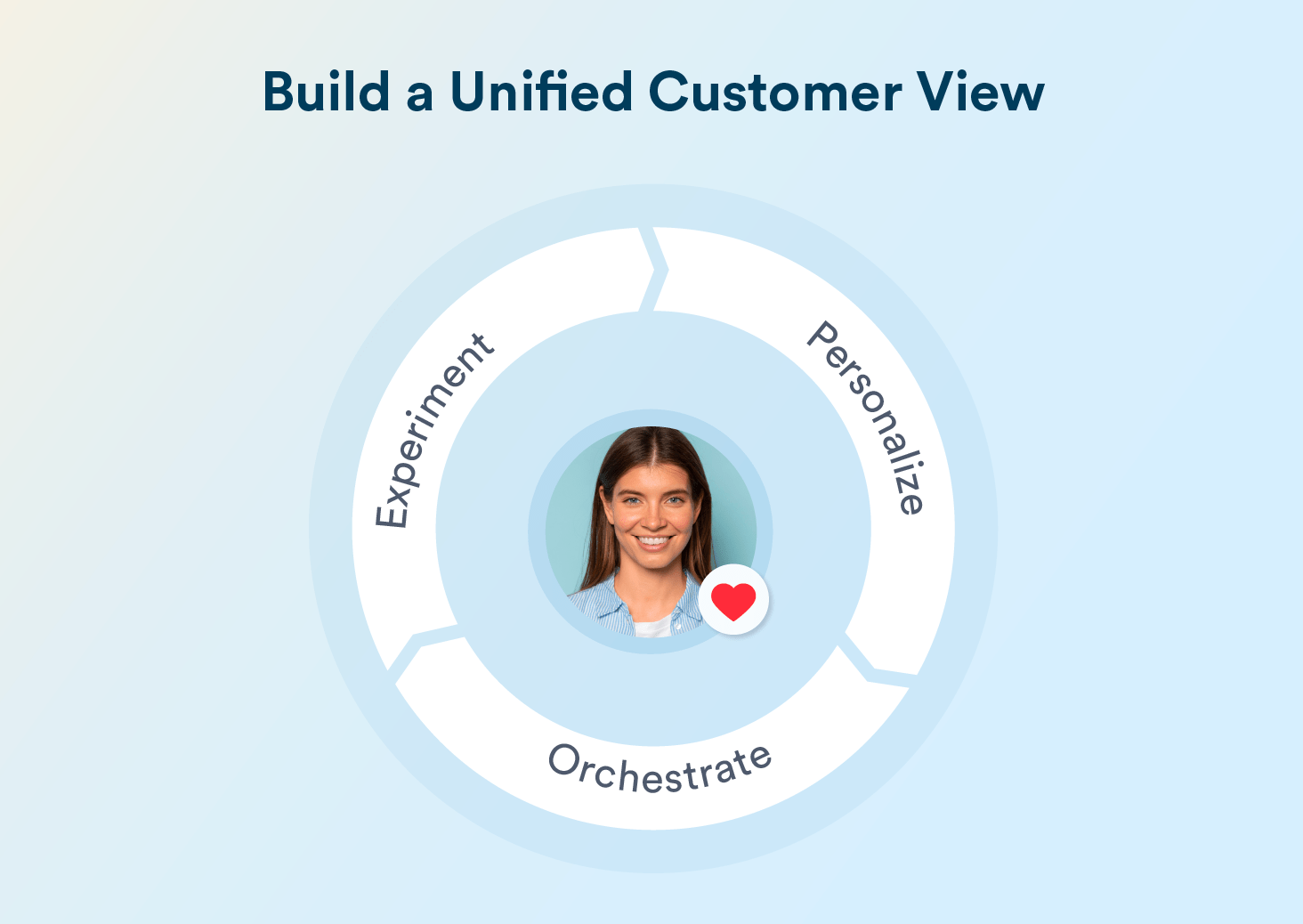
The first step in using a customer segmentation tool is gathering all the data in one place. It can pull data from multiple sources, so you can get a 360-degree view of your customers.
Once your data is integrated, you can begin to see patterns, which is the foundation of your segmentation strategy.
2. Define Your Segments
With a unified view of your customers, it’s time to define your segments. Segmenting can be based on demographics (like age or location), behaviors (such as purchase history or website visits), or audience preferences.
For example, a clothing retailer might distinguish between frequent buyers and first-time visitors, while a service business could focus on stages in the customer lifecycle, such as leads, first-time buyers, or loyal customers. Starting with a few high-impact segments will keep the process manageable and help you meet your marketing goals.
3. Create Customer Segments in Your Tool
Now that you have your segments, your tool will help you organize customers accordingly. This may include setting up rules like:
- Loyal customers who regularly purchase.
- Visitors who have added items to their cart but didn’t check out.
- Leads who downloaded specific content but haven’t engaged further.
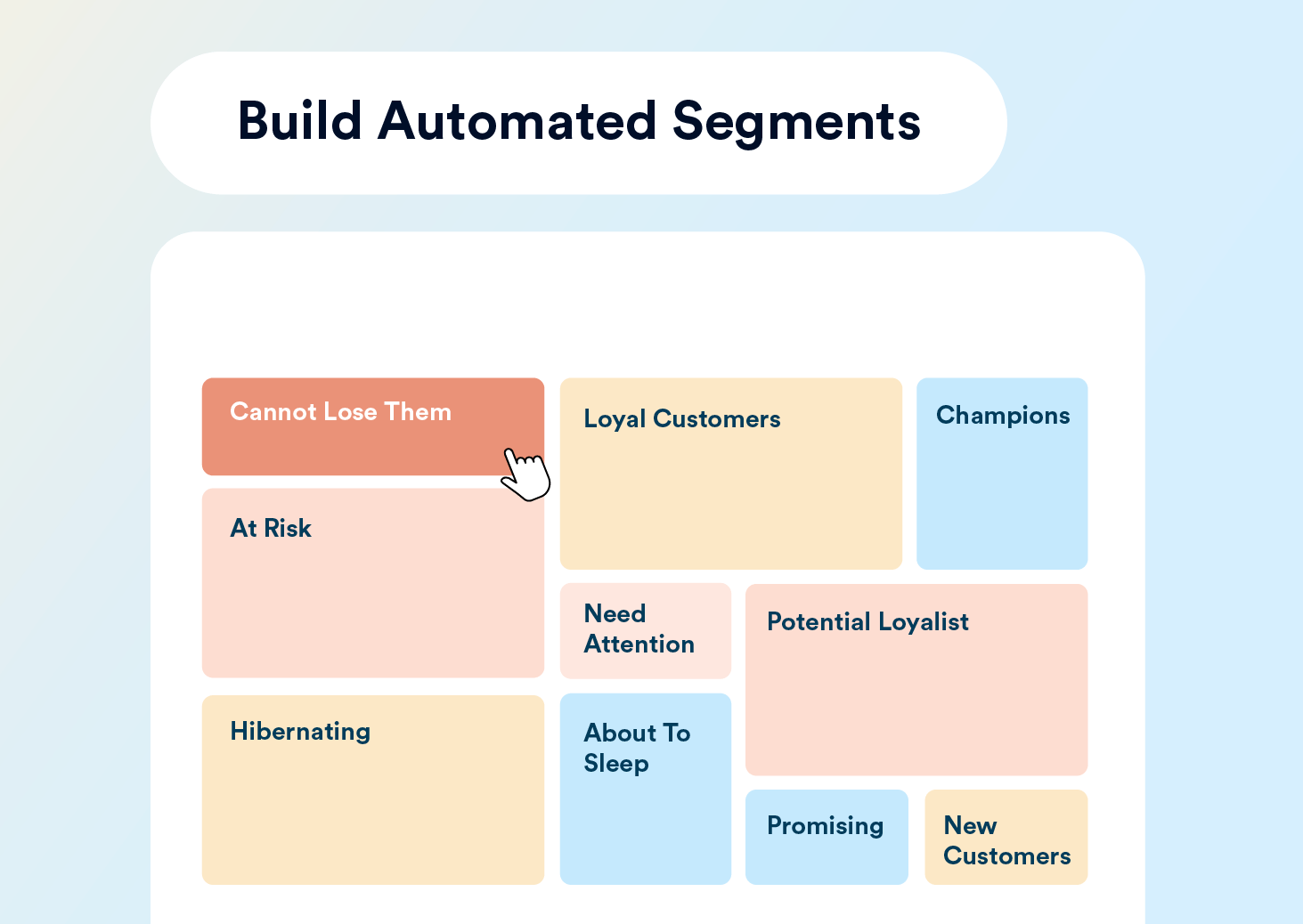
Quality segmentation tools often automate much of this process, making it easy to manage large data sets. Build automated segments with customer segmentation tools
4. Send Targeted, Personalized Campaigns
With your segments ready, it’s time to tailor campaigns for each one. Personalized messaging can take the form of email marketing, special offers, product recommendations, or website content.
For instance, to boost the lifetime value of loyal customers, you might offer personalized discounts or early access to sales.
The more personalized your messaging feels, the more likely customers are to engage.
Want to optimize your email outreach? Check out the top 10 email marketing platforms today.
5. Track Results and Adjust
Segmentation isn’t a set-and-forget process. Track performance across your segments and make adjustments as needed. Key metrics include:
- Conversion rates
- Open and click-through rates (for email campaigns)
- Repeat purchases
Most audience segmentation tools have built-in analytics to help you measure the effectiveness of your campaigns. If a segment isn’t responding as expected, refine your criteria or adjust your messaging.
Read More: 21 Customer Segmentation Examples to Target Your Ideal Audience
How to Select the Right Customer Segmentation Tool for Your Business
Here’s a step-by-step guide to selecting the right customer segmentation tool for your business:
1. Define Your Objectives: Determine your goals for customer segmentation, such as improving customer retention, email engagement, or streamlining user onboarding. Knowing your objectives helps narrow your options to tools specializing in those areas.
2. Assess Key Features: Look for tools that offer essential features.
- Data integration is crucial for seamless connection with existing CRM, marketing automation, and analytics platforms.
- Ensure the tool supports multiple segmentation types, including demographic, behavioral, geographic, and psychographic.
- Prioritize user-friendliness with an intuitive interface, easy navigation, and pre-built templates.
- The tool should provide actionable insights and enable actions based on segmentation data, such as personalized email campaigns.
- Dynamic segmentation is important for real-time updates that reflect changes in customer behavior.
- Robust data security measures, including encryption and access controls, are crucial for compliance and protecting customer data.
3. Determine the Data Types: Decide on the data you’ll gather based on your priorities, which you can collect through surveys, customer interviews, and product usage data.
4. Evaluate Integration Capabilities: Choose a tool that integrates with your existing systems like CRM, marketing automation platforms, and analytics tools. This ensures smooth data flow and eliminates manual effort in transferring data.
5. Consider Scalability: Choose a tool that can scale with your business as your customer base grows and your segmentation needs become more complex. Consider your business size and type, as some tools are built for large data sets while others are designed for simplicity.
6. Look for Ease of Use and Support: A tool may have powerful features, but if it’s difficult to navigate, you may struggle to get the full value from it. Look for tools with intuitive interfaces, clear documentation, and robust customer support. Some tools offer onboarding assistance or dedicated account managers, which can make all the difference if you’re new to customer segmentation.
7. Consider Customization and Advanced Features: Depending on your business needs, you may require features like predictive segmentation, machine learning capabilities, or customizable reporting. Advanced features can enhance segmentation accuracy and provide deeper insights, but they may also increase the tool’s complexity. Ensure the tool has the level of customization and advanced capabilities you’ll need without overcomplicating your workflow.
Key Takeaways
Customer segmentation tools provide an invaluable way to connect with your audience by targeting their unique needs and preferences. It’s easy to get lost in the numbers and metrics, but remember: these tools are ultimately about understanding your customers on a deeper level.
Try CleverTap’s customer segmentation solution for advanced insights and tailored messaging that put your customers at the heart of your strategy. Learn more here.
Recommended reads for you:
Top 14 Push Notification Platforms to Boost User Engagement
21 Must-Know Mobile Game Analytics Tools, Metrics & Resources
Agnishwar Banerjee 
Leads content and digital marketing.Expert in SaaS sales, marketing and GTM strategies.
Free Customer Engagement Guides
Join our newsletter for actionable tips and proven strategies to grow your business and engage your customers.














































